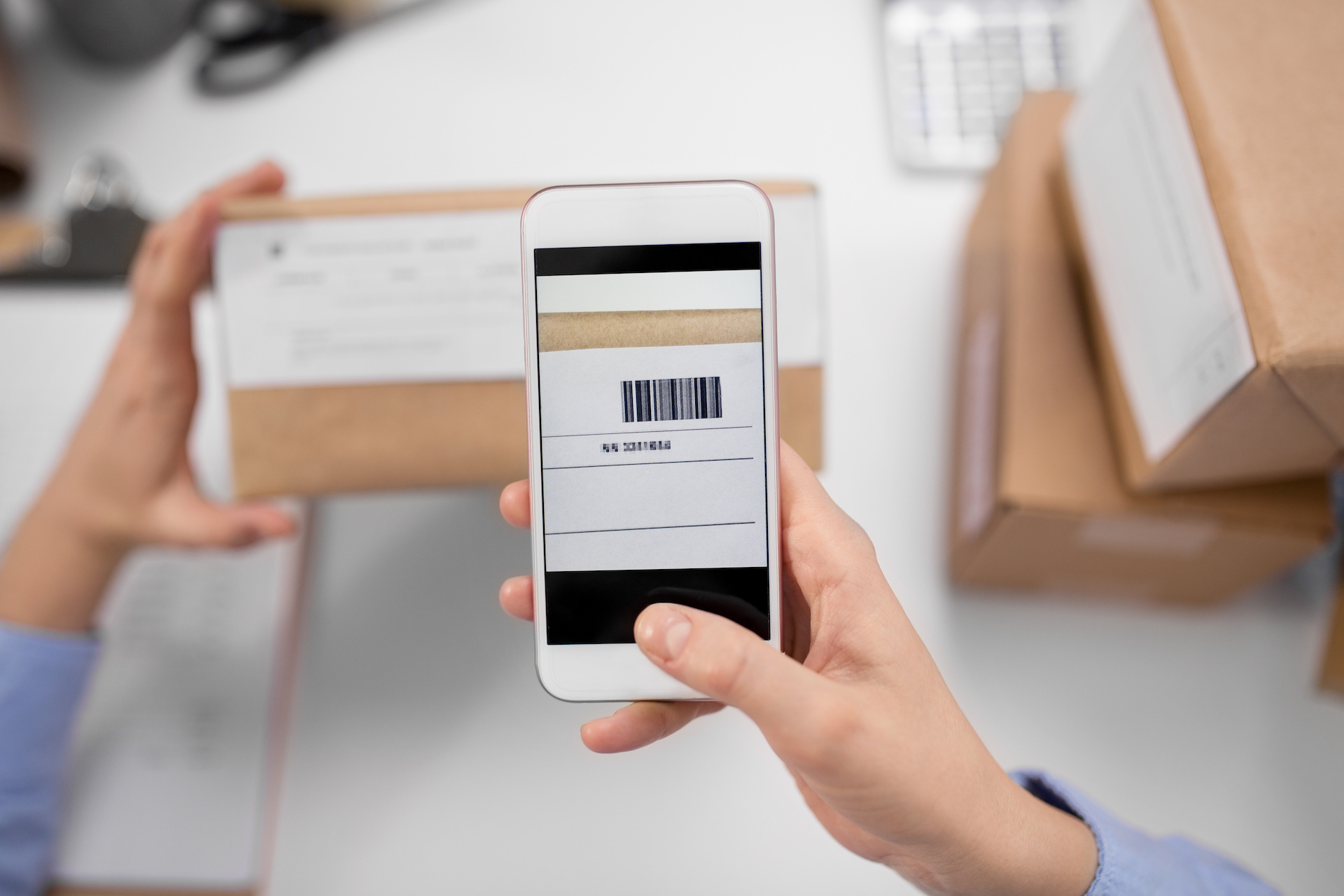
Inventory management is a critical aspect of running all kinds of businesses. And understanding the ins and outs of stock-keeping units (SKUs) can help you manage your inventory better.
A core part of managing your inventory effectively is through the use of an SKU number and an SKU system.
But what exactly is an SKU, and how can it help you manage your business better?
This article will discuss everything you need to know about SKUs, why you should have them, and how you can use it to help your business. Let’s begin.
What is an SKU?
An SKU number is a unique identifier used to differentiate products. It's also known as a stock-keeping unit, product ID number, or part number. It usually consists of eight characters that identify a product type, supplier, color, size, and other characteristics of the particular item.
This code can also be digitally scanned with readers, allowing owners to track the position, price, details, and point-of-sale of the item. You can think of it as a barcode with letters, numbers, and symbols that tell you all about the product. Business owners and managers use it to track inventory straight from their storage area to the point of sale.
For smaller businesses, SKUs may come in the form of physical labels that owners use to simply give them information at a glance.
Aside from physical products, SKUs can also be allotted to intangible products, as long as they're billable. For example, digital artwork or e-books can also be given SKU codes.
It’s important to remember that although they might sound the same, SKUs aren’t the same as UPCs or barcodes.
SKU vs. UPC: What’s the Difference?
UPC is short for Universal Product Codes. These are 12-digit codes used to externally identify products that are sold in stores. They have a specific structure and can be scanned with barcode readers.
The main thing to remember about UPCs is that they don't change regardless of who's selling the product. They contain the same information, namely the manufacturer, product line, and other details about a specific item.
On the other hand, different companies can have different SKUs for the same products.
This is because SKUs are created internally by businesses to help them with their inventory management. Through SKU codes, businesses can differentiate products, track inventory more effectively, and store additional data.
Here's an example. Let's say you have a Brand ABC mini crossbody bag in black with a UPC of 632254646796.
The stocks get delivered to two different wholesalers, Store A and Store B. Store A assigns the product an SKU number of ACR0MN3L while Store B assigns it an SKU number of JD-8HK1V.
Store B sells some of their stocks to a retailer, who gives the product a new SKU number, BL3JX1KM.
Throughout this entire process, Brand ABC mini crossbody bag in black's UPC stays the same: 632254646796.
SKU vs. Barcode: What’s the Difference?
Barcodes are universally recognized symbols that transmit information to a scanner or reader. They usually contain 12 digits in the form of lines and spaces, which are composed of parallel bars that represent numbers and letters.
Although SKUs are typically placed alongside barcodes, they are not the same. An SKU is an inventory tracking system, while a barcode is an information encoding system.
In other words, while barcodes contain information about a product, it doesn't tell you details specific to the company that's selling the product. Businesses still need the SKU to store relevant information such as inventory levels, order history, and pricing related to the product.
That said, barcodes are known to contain SKUs and, more commonly, UPCs. When you buy a product from a store, the barcode is scanned and read by the point-of-sale reader. It then communicates with the company’s inventory system to pull up an SKU.
SKU vs. UPC vs. Barcode Comparison Table
Now that you have a basic idea of what SKUs, UPCs, and barcodes are, let’s take a quick look at how they compare:
|
Category |
Stock Keeping Unit |
Universal Product Code |
Barcodes |
|
Scope |
Internal use |
Universal |
Universal |
|
Number of characters |
Can range from 8 to 12 |
12 characters |
None |
|
Use |
Identifies products for the vendor to sort through |
Gives information on manufacturer and item details |
Encodes minimal data |
|
Composition |
Alphanumeric characters |
Numbers only |
Consists of coded bar lines |
|
Determined by |
The retailer of the product |
Issued by an international standard committee |
Bar coding system purchased by business owner |
Why are SKUs Important in Inventory Management?

Now that you know what SKUs are, the next step is determining exactly what they’re for.
We already know that they allow businesses to categorize their products for easier inventory management – so what then?
Well, there are many ways that this coding scheme can improve your business. Here are some of them.
Improves inventory tracking accuracy
Whether your business is big or small, tangible or intangible, you need to be able to manage your inventory well.
If you don’t, you'll have no idea what kind of products are coming and going under your watch, and you’ll be blind to the actual functions of your business.
An SKU is an easy way to track products as they move across your inventory. It allows you and your managers to tell product traits from just a glance.
By keeping an eye on your SKU data, you’ll know crucial information about the status of your stock, how much they are, where they are, etc. This data, in turn, informs crucial decisions, such as when you want to reorder certain items.
Makes demand and sales more predictable
If you have a good grasp of what products are coming and going from your inventory, you can create better forecasts that allow you to plan around future demands.
Specifically, it allows you to plan what products you can sell, and how much inventory of certain products you’ll want to keep. Your SKU data will show you what’s selling and what’s not, so you can boost inventory of certain items and cut back on others.
You can also structure your SKU coding so that it can better suggest what products your customers want to buy.
If your SKU architecture can easily communicate the attributes of a product that customers want to know, you can create more accurate forecasts and meet consumer needs better.
Amplifies profit generators
Your SKU architecture showcases both your most and least popular products.
With this information, SKUs can help you be more creative with marketing. If you have data-backed information about how well a certain product is performing, it’s much easier to become creative with how you will market that product.
With SKU data, you know what kind of products to stop ordering and what kind of products you should focus more on.
Data about your top revenue-generating products can inform decisions about in-store product displays and visual merchandising, plus strategic marketing initiatives that speed up the turnover of that popular item.
Enhances customer satisfaction
If you know your SKU data, you’ll be able to easily find what customers are looking for and answer their inquiries quickly.
For example, when a customer calls in asking if you have a certain product in stock, you can use the SKU data to quickly look up where it is located and how many of them there are.
Furthermore, if you know which products to reorder and when, your customers will never need to wait to get their hands on what they’re looking for. This ensures a better customer experience overall, which improves your brand image.
When customers always find what they need in your shop, they’re more likely to patronize you over other competitors that frequently have sold-out items because they didn’t know where their reorder points were.
And when your customers keep on coming back to you, you develop brand loyalty.
That way, when the item does go out of stock (hopefully through no fault of your own), your customers will be willing to be more patient while you address the issue.
Personalizes customer experience
SKU product data is useful for more than just tracking sales and managing inventories – it can also be used on the sales floor.
If a product is out of stock, your retail staff may utilize their understanding of SKUs to point clients toward alternatives. Plus, even if a customer's desired item is in stock, your employees can still use SKU knowledge to recommend complementary items or upsell.
You can also apply it to e-commerce websites as well.
When you browse things online, merchants frequently present similar products that you might enjoy. This can be accomplished through a retailer's SKU architecture, where an algorithm has been used to generate suggestions for products with comparable qualities or features.
Creating SKU Numbers for Your Business

There are multiple ways that you can create SKU numbers to help you organize your inventory and recognize product movement.
The easiest way to make SKU numbers are through automated software.
Most POS and inventory management systems simplify the SKU creation – all you need to do is your regular inventory-taking, and the software will create a tagging system automatically.
There are also online SKU generators that you can use, further making SKU creation much easier. Platforms like TradeGecko and Primaseller can help you make SKUs easily.
Keep in mind that creating SKU numbers manually is not recommended. Not only is it tedious, but it's also prone to human error. It's simply much more efficient to use automated software or an online SKU generator.
Parts of an SKU number
Although we don't recommend creating your own SKU numbers, it's still important to know their basic components.
Even if you’re using automated features, knowing how an SKU number is made not only helps you understand them better, but also check for potential errors.
The first portion of an SKU number is usually the merchant's or manufacturer's identification number.
The next section is a combination of letters and/or numbers that represent characteristics of the product, such as its size, color, material, and more.
Finally, you have your unique identifier – a set of several digits at the end of an SKU to make sure it's specific to your business. These numbers can represent anything you want, so utilize them properly.
Here’s an example.
|
Supplier |
Identifier |
Product |
Identifier |
Sequence Identifier |
SKU |
|
Central Cottons |
CC |
Towel |
21 |
891 |
CCT21891 |
|
Featherlite Inc. |
FI |
Pillow |
22 |
781 |
FIP22781 |
Best Practices for SKU Naming System
Now that you know how you can make your very own SKU system, you’ll want to know about the best ways that you can go about designing a naming convention for this system.
● Number of characters. Stay within the 8 and 12-character count for your naming convention. That way, you won't have too much trouble when it comes to manually entering SKU numbers.
● Begin with a letter. Letters are easier to distinguish and read than numbers, so always begin your SKUs with a letter whenever possible. Avoid spaces or special characters.
● Avoid special characters. Special characters such as &, @, or $ might confuse computers and might be read differently by different systems. Similarly, it's best to avoid the number 0 if possible, as it can easily look like the letter O at a glance.
● Make it easy to read. Your naming system should result in easy-to-understand SKUs with a comprehensible format.
● Identify the primary characteristic. Always begin the SKU with the most in-demand aspect of the product. For example, if the most shopped-for aspect of a product is its size, begin the SKU with the identifier LA, which means Large.
Everything You Need to Know About SKUs

SKU numbers can be a valuable tool for managing your business’ inventory.
Having this systematized alphanumeric code makes inventory management and sales monitoring easier. It also allows employees to know information that can help them improve sales performance.
Aside from that, SKU numbers can help forecast demand, enhance customer satisfaction, and create a personalized customer experience.
Now you know what SKU numbers are and how to use them! Hopefully, you can now implement your own system.



